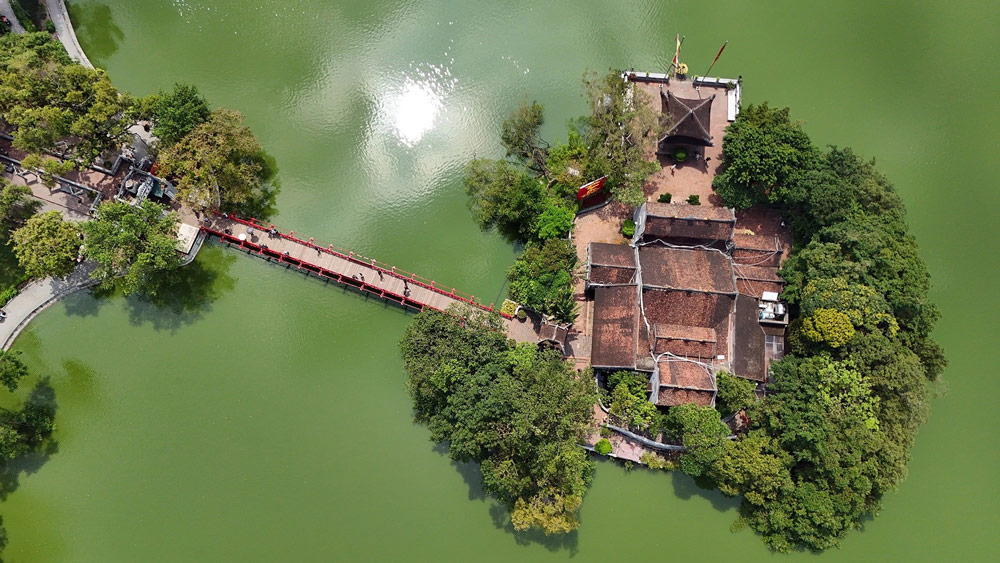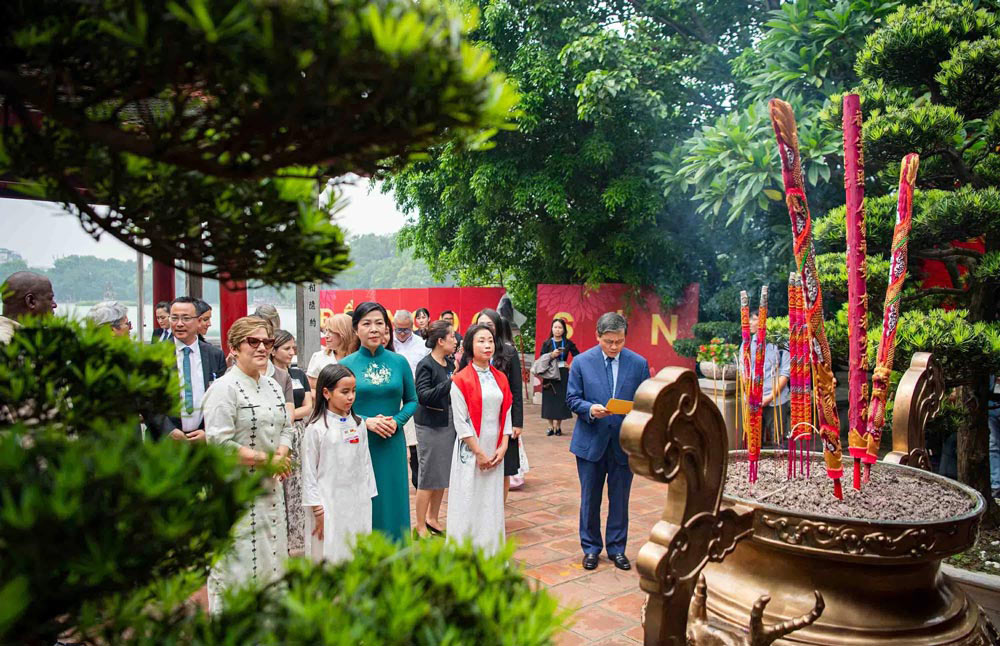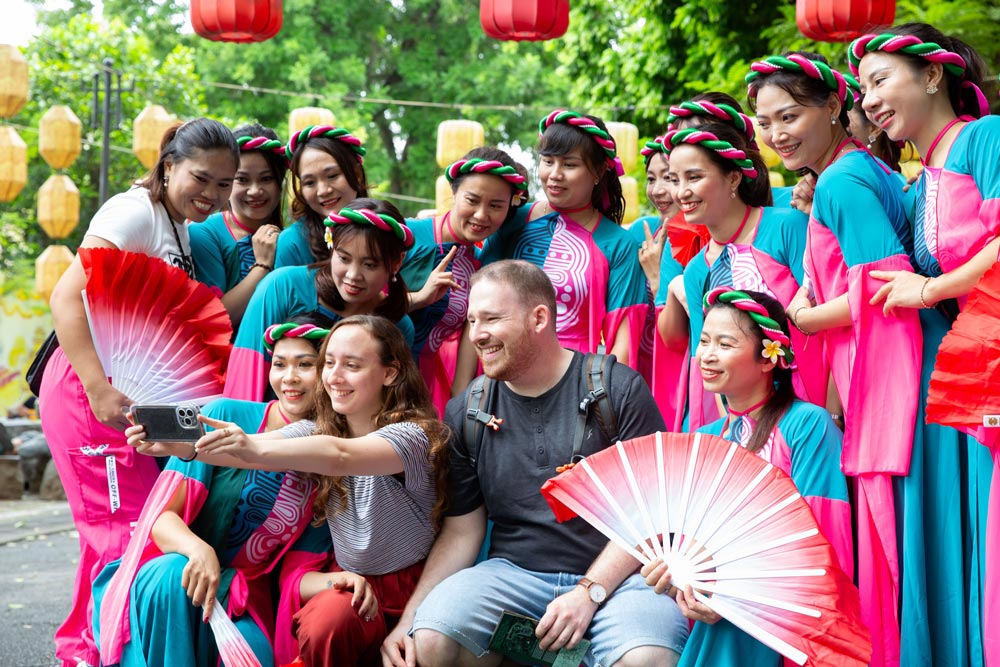Experience a real Hanoi culture trip with our 2025 insider guide. Discover a 3-day journey through traditional arts, authentic food, hidden corners, and the deeper stories behind Vietnam’s capital.

If you’re here, it’s probably because you’re not interested in the usual sightseeing loop. You want the real Hanoi—the one locals talk about over tea at midnight, the one hidden in back-alley temples, the one that wakes up at 3 AM when the flower market explodes into color. You’ve heard Hanoi has soul, and you want to feel it for yourself.
It’s not a rushed bus tour or a quick selfie stop. It’s an immersion. It’s choosing experiences that pull you deeper into the city’s stories:
Tasting: Not just the famous phở, but the dishes Hanoians actually crave—the smoky bún chả grilled on street corners, the savory xôi sold from metal tins at dawn, the egg coffee recipe passed down for generations.
Listening: Hearing something ancient and unexpected, like ceremonial ca trù singing performed inside a small temple you’d never find on your own.
Seeing: Understanding Hanoi’s history not just through museum labels, but by standing at places where the past still lingers—like the rusted B-52 wreckage half-submerged in Huu Tiep Lake, quietly telling its own story.
The goal of this guide is simple: To give you a roadmap to the authentic Hanoi. We’ll blend the iconic sights everyone knows with the lesser-known experiences that make the city unforgettable. By the end, you won’t just have visited Hanoi—you’ll have connected with it.

Before you start planning your culture trip Hanoi, there are two practical questions every traveler asks. Let’s make them simple.
If your goal is to experience Hanoi’s culture—not just skim the highlights—the sweet spot is three days.
With this rhythm, you get a rich, balanced experience without rushing from one stop to the next. Anything less than three days feels like you’ve only scratched the surface.
This is one of the most important planning decisions for a culture-focused trip.
Especially June to August—it’s brutally hot, the humidity is overwhelming, and it’s the rainiest time of year. Heavy storms can disrupt plans, especially outdoor experiences and day trips like Ha Long Bay.
If you want comfortable weather for wandering markets, exploring temples, watching lakeside performances, or joining evening food walks, choose:
These shoulder seasons are when Hanoi truly shines—when locals linger in parks, traditional performances move outdoors, and the city feels alive in the best way.
If you want a culture trip Hanoi that feels real—not rushed, not touristy, but genuinely meaningful—this is the perfect 3-day plan. It blends the essentials with the hidden corners that locals love, so you walk away feeling like you truly understood the city.
Begin your journey at the Temple of Literature, one of Hanoi’s most peaceful and beautiful landmarks. Built in 1070, it was Vietnam’s very first university, and walking through its courtyards feels like stepping back in time. The architecture, the calligraphy, the tranquil gardens—this place is the cultural “starter pack” for understanding the city’s scholarly roots.
Grab a plate of Bún Chả, the smoky grilled pork dish locals eat on repeat. Nothing fancy—just find a busy, local shop and follow your nose.
Head to the Vietnamese Women’s Museum, one of the most underrated museums in the country. You’ll learn about family roles, traditional dress, ethnic diversity, and the incredible strength of Vietnamese women throughout history. It’s thoughtful, inspiring, and eye-opening—exactly what a culture trip should be.
Finish the day with the Thang Long Water Puppet Show. Yes, it’s popular, but that’s because it’s worth every minute. This ancient art form began in the rice fields of the Red River Delta and is unlike anything else you’ll see.
End the night with a guided street food tour, the best way to understand Hanoi’s food culture. You’ll eat at tiny stalls you’d never find on your own and hear the stories behind each dish.
Skip the tourist areas and head into the Ngoc Ha neighborhood and around Truc Bach Lake. This is the Hanoi where families shop for breakfast, grandmothers gossip on tiny stools, and life moves at its own rhythm.
While you’re here, stop by a surprising landmark: the B-52 wreckage still lying in Huu Tiep Lake. It’s a dramatic, quiet reminder of the war—right in the middle of a residential neighborhood.
Choose one of these two uniquely “Hanoi” experiences:
Walk the Hanoi Ceramic Mosaic Wall, a 4km-long masterpiece created by artists and local communities. It tells Hanoi’s story in tiles—history, myth, modern life—all woven together.
From traditional performances to hidden cocktail bars and night markets, Hanoi’s evenings are another world. (Your next section will likely go deeper here.)
A true culture trip Hanoi should include the landscapes and traditions beyond the city. You have two excellent choices:
This is the most rewarding choice if you have the full day.
If you want breathtaking scenery and deep cultural layers, this is it.
Only 30–45 minutes from Hanoi, Bat Trang is a living craft village where pottery techniques have been passed down for centuries.
Stroll the lanes, visit family-run workshops, and sit at a potter’s wheel to make something yourself. It’s calm, creative, and incredibly local.

If you think Hanoi’s culture lives only in museums or temples, wait until the sun goes down. Nighttime is when the real Hanoi comes alive—messy, musical, soulful, and electric in ways that daytime could never show you. For anyone planning a culture trip Hanoi, this is the part of the itinerary you absolutely shouldn’t skip.
You won’t find this in guidebooks. And you definitely won’t find it in bars. Hanoi’s traditional music scene is intimate, emotional, and deeply rooted in centuries of Vietnamese artistry.
Head to Kim Ngan Temple (42 Hang Bac) on weekend evenings. Ca Trù is a UNESCO-recognized art form, performed with a single-string instrument and haunting vocals. It’s academic, ancient, and unbelievably beautiful. You don't need to understand every lyric—you feel it.
Just outside Dong Xuan Market, musicians gather on weekend nights to perform Xẩm, a style once sung by blind street artists for survival. It’s raw, emotional, and full of character. Standing there listening, you’ll understand why Hanoi is often described as “a city with an old soul.”
If you want to know what locals really do at night, here’s your window into everyday Hanoi.
This is one of the most surreal things you can do on a culture trip Hanoi.
Go at 2 AM—not earlier, not later. This is when the wholesalers are in full swing. Buckets of roses, lilies, sunflowers, orchids—waves of color under bright lights, with vendors who’ve worked these stalls for generations. It’s chaotic, loud, and totally fascinating.
From Hang Dao to Dong Xuan, the streets turn into a long, neon-lit maze of vendors selling snacks, crafts, clothes, and souvenirs. Families stroll, kids run around with balloons, teenagers take photos—it’s the “weekend heartbeat” of the Old Quarter.
Hanoi’s culture isn’t just ancient traditions. It’s also young, creative energy shaping the city today.
Just steps from the Opera House, this tiny, dimly lit jazz club is a Hanoi institution. Founded by one of Vietnam’s most respected jazz musicians, the club hosts live music every night performed by passionate, talented locals. It’s classy, atmospheric, and a refreshing contrast to the Old Quarter’s noise.
Grab a drink, settle into the low light, and let the music carry you. This is Hanoi’s modern cultural side—refined, artistic, and full of quiet confidence.

Hanoi’s culture isn’t one single thing—it’s a beautiful blend of ancient arts, proud history, and a food scene that locals protect like treasure. If you want to understand the city’s cultural DNA, think of it in four layers:
For a true culture trip Hanoi, 3–4 days is the sweet spot.
Two days feels rushed; three lets you explore deeply; four gives you room to breathe and add an essential day trip like Ninh Binh. It’s the perfect pace for absorbing the city without burning out.
May to September is when Hanoi gets intense.
Expect sticky humidity, sudden downpours, and the highest chance of typhoons—especially in July and August. If you’re planning outdoor cultural activities or a Ha Long Bay cruise, this is the season where things may get cancelled.
If your dates are flexible, aim for autumn (Sept–Nov) or spring (Mar–Apr)—Hanoi is at its finest then.
If you want to experience the real, raw, fascinating Hanoi, add these to your list:
These experiences give your culture trip Hanoi depth far beyond the typical tourist route.
The top choice is Ninh Binh—often described as “Ha Long Bay on land,” with ancient temples, dramatic limestone mountains, and peaceful river valleys. A perfect full day.
For something closer and more hands-on, choose:
Bat Trang Pottery Village — Just 30–45 minutes away, this 1,000-year-old craft village lets you watch artisans work—and even try shaping your own pottery.
Both options offer a powerful look at rural Vietnamese culture and are perfect additions to any Hanoi culture trip.
A real culture trip Hanoi isn’t just about ticking off landmarks. It’s about letting the city reveal itself to you layer by layer. It’s the moment you sip an egg coffee in a hidden alley. It’s the quiet pride in a potter’s hands at Bat Trang. It’s the sound of Ca Trù echoing through an old temple. And yes, it’s the steaming bowl of phở that somehow tastes better than any you’ve had before.
In Hanoi, everyday things carry meaning—food, music, craft, community—and each one tells a different piece of the same thousand-year story. When you leave, you won’t just remember what you saw; you’ll remember how the city made you feel.
Final Thought: You may arrive for the food and the history, but you’ll leave with a deep appreciation for the spirit, creativity, and resilience of the people who call Hanoi home.
Need Help Planning Your Culture Trip?
If you want to save time, skip the stress, and make your Hanoi culture experience seamless from start to finish, you can reach out to Asia Mystika, a trusted local tour operator in Vietnam. We can help you plan market visits, cultural workshops, day trips, hidden-gem activities, and fully personalized itineraries—so you focus on enjoying the journey, not organizing it.
Just tell us what kind of cultural experience you want, and we’ll craft it into a trip you’ll never forget.
WhatsApp: (+84) 866.22.7878
Planning trip: Click here
Email: sales@asiamystika.com
Website: www.asiamystika.com
Asia Mystika Profile: Click Here

